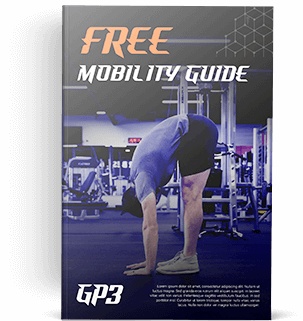Key Points:
1. When it comes to training, people have a particularly difficult time accepting that “less is more.”
2. This is partially because a belief that more is always better is hammered into us from a young age.
3. But, when we never decide what “enough” means, we put ourselves at increased risk of injury, stress, and burnout.
Estimated reading time: 4-8 minutes
We’re going to get half-philosophical, half strength-training technical today. To start, I’d like to ask you to think of strength training like medicine, and also like alcohol.
Let me explain.
If you have a headache and you take ¼ of an Advil, it probably won’t do anything. In contrast, if you take 50 Advil, that would be a terrible idea.
As another example, let’s say you wanted to go out and have a fun but not too crazy evening with your friends. You want that alcohol-infused confidence that allows you to strike up a conversation with anyone and own the dance floor, but you don’t want to make a fool of yourself or vomit. So, if you’re planning on being out for four or five hours, two drinks probably won’t be enough. On the other hand, 20 drinks will put you in the hospital.
With medicinal drugs (like Advil), recreational drugs (like alcohol), and strength training (like bench pressing), the key is to find the sweet spot. In anything, not only is there a point of diminishing returns; there’s a point of increasing detrimental consequences.
You want just enough to remove your headache, get pleasantly tipsy, and grow stronger, but no more.
This is called the “Minimum Effective Dose.”
Put simply, the minimum effective dose gives you the most bang for your buck. In workout terms, it’s where you walk out of the gym tired from exertion but overall feeling better than when you walked in.
There’s another way of saying this, too. “Less is more.”
However, many people have quite a hard time with this concept. Especially when it comes to strength training, most people consciously or subconsciously hold a “more is more” belief. More sets must always be more effective than fewer. Heavier weight must always be better than lighter. Cardio every day must be better than three times per week.
Here’s why this isn’t true. As you may know, exercise actually damages muscle and connective tissue. To oversimplify what happens next, the body responds by building the damaged tissue back bigger and stronger than it was before. This repair process occurs primarily during sleep, and requires enough calories, protein, and water to happen.
It also requires that you don’t re-aggravate the damaged tissue while it’s still in the rebuilding phase. It’s kind of like how when construction workers fix a damaged road, they don’t let you drive on it immediately after laying down new asphalt.
Also, when it comes to the particular belief one must always use heavier weights, the body actually has a built-in mechanism designed to shut off muscles if it detects too much tension. You see this all the time in the gym with this common exercise. It’s supposed to be targeting your triceps, but many people load up so much weight that it ends up becoming an inefficient trapezius and shoulder exercise instead. Specialized cells in the body called proprioceptors detect that the mechanical tension is too great for the triceps, so it shuts them off. The triceps don’t “give their all” and then ask for a little help from the traps and shoulders, they just let those other muscle groups do all the work!
So in this case, less weight is way more effective! Who knew?
Despite this, many people strongly resist “less is more.”
I’m going to highlight the prevalence of these beliefs with a couple examples of recent online interactions. But first, some context. In August, I waded into the world of social media content creation for the first time, and have actually been surprised at how much I’ve enjoyed myself. In addition to being a creative outlet, it’s also provided me with the opportunity to interact with a much larger and much more diverse audience, in terms of training background and experience.
Having worked full time as a coach for the past five years, and part-time for many years before that, most of my conversations about training were with one of two audiences: fellow coaches or people who paid me to work with them. So, I typically spoke either to well-educated fellow professionals or clients who wanted to learn.
Unsurprisingly, it’s not the same online.
A few weeks ago, I spoke with a youth soccer player who claimed to be doing 11 hours of speed ladder work each week. Yes, you read that correctly. He said he would do two days of three hour ladder sessions and three days of two hour sessions…each week!
I’ll take him at face value here and say he wasn’t exaggerating. He simply held the belief that more training automatically meant better results. So, I tried to gently challenge him on this belief in order to encourage him to think critically about it. After he told me that the player who trains hardest and most often will always be best, it wasn’t until I asked if he thought training for twenty hours per day would make him better or worse that this started to sink in.
I also helped a pretty fit individual in his late 20’s or early 30’s develop a routine to deal with some nagging injuries. The aim was to create a relatively short, five to fifteen minute regimen that could be performed daily, without much extra thought or effort. When I asked him to come up with a list of areas he wanted to prioritize that we could trim down, well…let’s just say it needed quite a bit of trimming.
He initially wanted his daily routine to include two separate forms of cardio and nearly twenty different exercises. There’s no way it would have been possible to complete everything in under two hours.
Now, I really hope I’m not coming across as unkind to these two individuals. It is not my intention whatsoever to demean them. I simply wanted to provide a couple real world examples of the “more is more” mentality. And let me be clear. It’s not surprising, nor is it these two guys’ “fault” that they got sucked into this trap.
We’re indoctrinated into “more is more” from a very young age.
This isn’t going to turn into a rant against the perils of capitalism, but I do want to highlight the effect that our hyper-individualistic, growth-focused economic system has on us. Growth is seen almost as a birthright. It’s our unalienable privilege, nay, responsibility to pursue growth and success at all costs. This isn’t even questioned.
Statements about businesses like, “If you’re not growing, you’re dying,” betray this belief. I recently read an article about the hugely popular Yeti Coolers saying that the impressive durability of their products was bad for the company’s long-term stock prospects, because a consumer wasn’t likely to have to replace their initial purchase. Yikes! Shouldn’t we be rewarding and incentivizing high-quality craftsmanship?
On a smaller level, individuals are encouraged to pursue personal development and flaunt “growth” in all aspects of their life. Spend more, do more, achieve more, constantly in pursuit of an intangible notion of better.
Now, I don’t want to pretend for a second that striving to better oneself and seeing what you can achieve is a bad thing. It’s not. However…
What do we call unlimited growth in the body?
Yup…cancer.
The point is, there’s probably a minimum effective dose of, well, everything. We should be striving to find that, rather than always more.
On a somewhat related note, I once had a conversation with a very dear friend of mine who told me that a goal of his was for every single year in his marriage to be better and happier than the last. I told him I thought that being happier than the previous year, every single year was unrealistic and likely setting him up for disappointment.
He didn’t agree. But I think this is a crucial point. I realize that I’m wading into the cliche swamp here, and that what I’m about to propose is much easier said than done. But, what if there’s an alternative to idealizing endless growth and constantly achieving more?
Change is the only constant
Subtly contained within the pursuit of more growth is the tacit admission that things won’t stay the same. So, if they’re going to be different, they might as well be better, right?
Fair enough. The problem is, life doesn’t work that way. Ups and downs are inevitable. At the risk of veering back into philosophical territory in what was ostensibly an article about training, it’s only in contrast to the bad that we know the good. Alan Watts speaks very eloquently on this, and I’ll do my best to paraphrase.
Imagine you’d lived your entire life in what many of us would consider perfect weather. Sunny, 75 degrees, 5% humidity. This warm, bright, pleasant climate would be impossible to appreciate because you’d have no point of comparison. You wouldn’t be able to enjoy it nearly as much as if you had experienced wet, cold, and dreary days.
In the end, I think answering the question, “What is enough for me, personally?” is one of the most important endeavors a person can undertake in most areas of their life. Do this with regards to your physique, your career, your relationships, your travel plans, your goals, your aspirations, and your dreams. Have the courage to admit that you can’t achieve everything, and that things won’t always be better than they are today. That can give you the focus to pursue what you decide really does matter. And luckily, nobody can decide any of this for you.
Even better, whatever you decide is perfectly okay.
So ponder on this. Because if you never try to answer it, you’ll be stuck endlessly pursuing the cancer of more, more, more.
Before you go, I’d love to hear from you! Have you thought about what “enough” means for you, personally? When it comes to strength training, do you think you do too much, too little, or exactly the right amount? Reply to this email and let me know!

